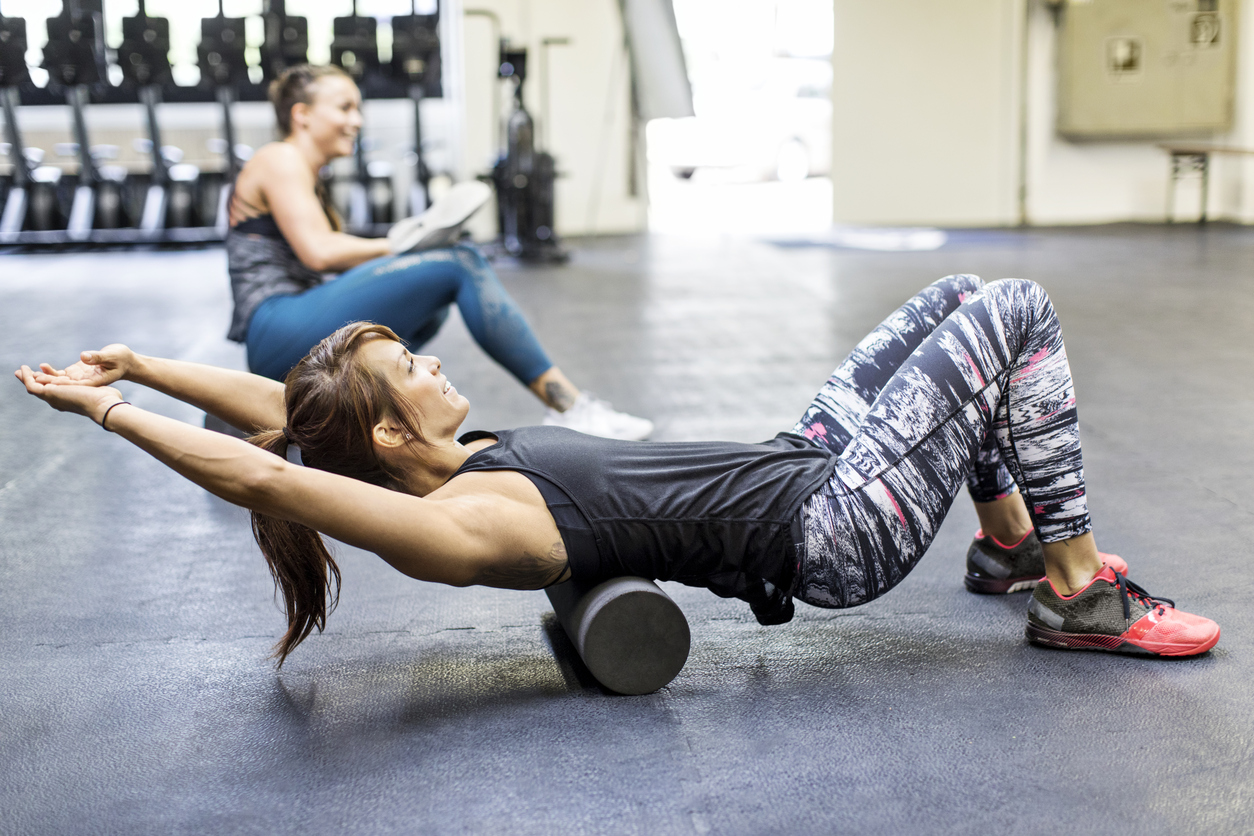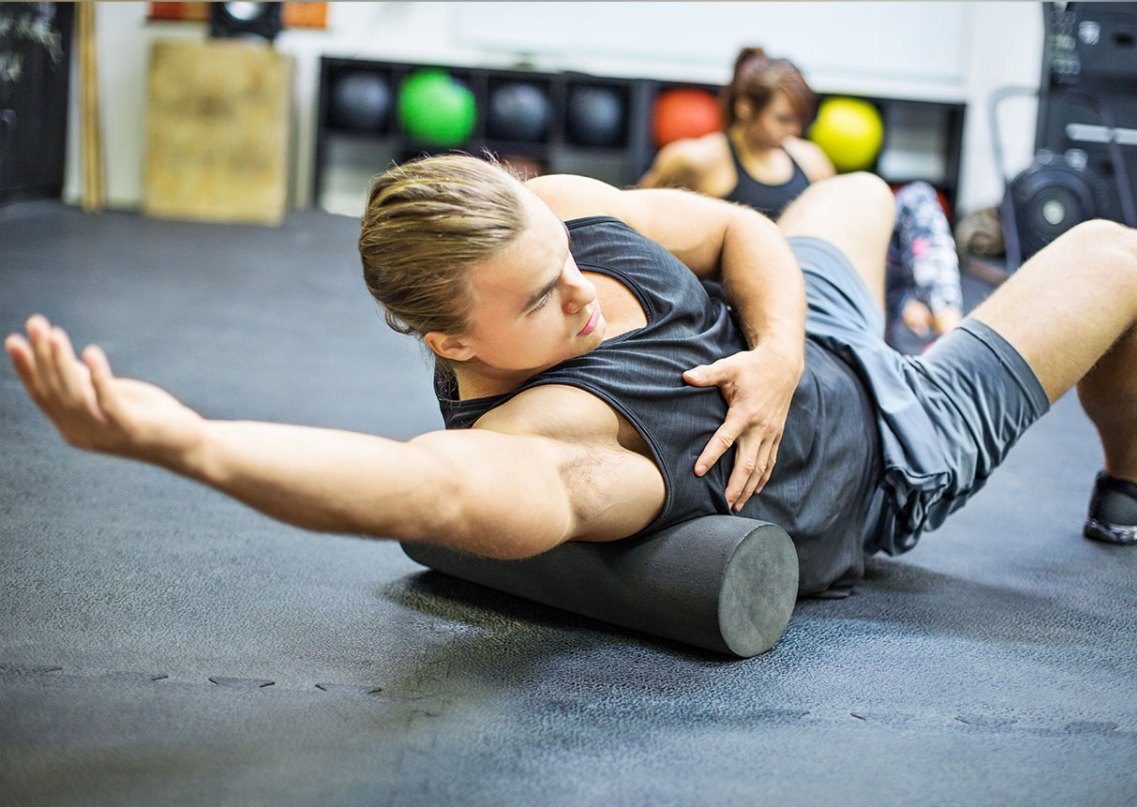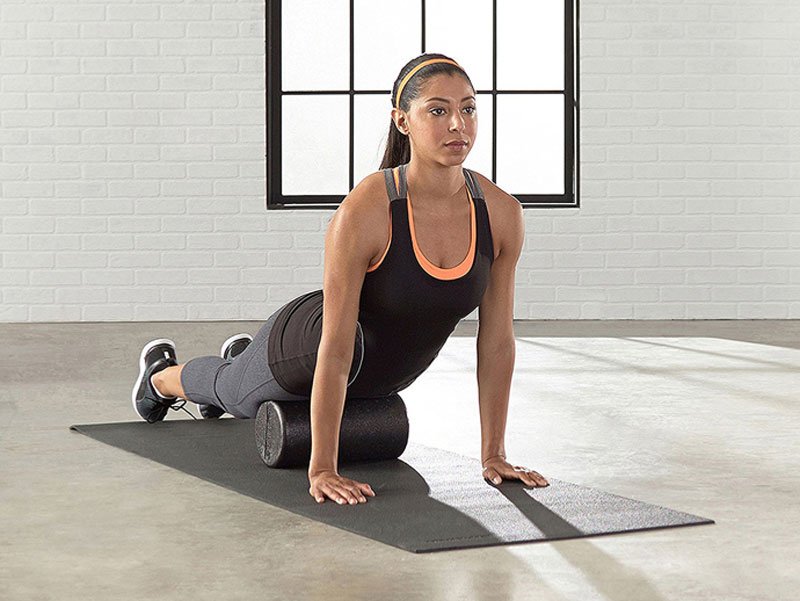Foam Rolling: How it Works
by Mal – Friday, 31. August 2018
Roll through the pain – in a “hurts so good” sort of way. A lot of us do it. Maybe after a run, after a particularly heavy Veloburn ride, or on our recovery days.
Why? Well, because we’re supposed to. And something about fascial release. Right?
The thing is, most of us who diligently foam roll do so because we’ve been told we should and because it’s trendy. Maybe your muscles seem to feel better when you do, so you keep at it. But have you ever stopped to ask what foam rolling is actually doing and whether it actually works the way you think?
To help you figure out what’s really going on when you cringe in delight, we read a few scientific articles to find out the real reasons to roll it out. Here’s what you need to know about the popular warm-up and recovery tactic.
The benefits of foam rolling range from warming up your muscles to recovering faster.
The research that’s out there suggests that foam rolling does most of what you hope, like warm up your body for a workout, help you recover from one, or just loosen tight, achy muscles, according to Pablo B. Costa, Ph.D., associate professor of kinesiology at California State University, Fullerton, and research committee member for the National Strength and Conditioning Association. For example, a 2018 study from the University of Stirling in the UK found that after foam rolling, it took less effort for a muscle to produce a given amount of force. These findings bolster previous studies in which people reported that they felt less fatigued when they foam rolled as part of their warm-up.
Meanwhile, a study in the Journal of Athletic Training suggests that foam rolling after a workout can help reduce delayed-onset muscle soreness, and therefore boost your performance in workouts to come. A lot of the time, what slashes your performance during a workout is the fact that your muscles are still sore from your last workout, says Polly de Mille, R.N., C.S.C.S., director of performance services at the Hospital for Special Surgery in New York City.
And a comprehensive review published in the International Journal of Sports Physical Therapy concluded that foam rolling promotes short-term increases in range of motion. According to de Mille, research consistently shows that foam rolling can increase muscle flexibility, which means you feel less tight and probably perform your workouts with better, more efficient, and safer form.
Okay, so it seems that Foam Rolling works, but how?
The leading reason why foam rolling appears to work is because of myofascial release. Maybe your asking “what is fascia? And why would you want to release it?” “Think of fascia as the sausage casing surrounding every muscle fiber, every organ, every nerve fiber, every bone in the human body,” de Mille says. The analogy isn’t that far off. Within the muscle, this fascia exists in multiple layers. It wraps around every individual muscle fiber or cell and around bundles of muscle fibers, called fasciculi. Together, these layers of fascia, apart from helping to give muscle its shape, attach to tendons and bones to help you pull, push, squat, run, bike, etc.
The thing is, all on its own, muscle fascia is pretty solid and could limit range of motion, or give you that feeling of stiff, tight muscles. That’s especially true if the fibers that make up your muscle fascia form what’s called “adhesions” or “trigger points,” de Mille says. “Ideally, all of these fibers are sliding by each other with ease as you move, like silky hair, but sometimes these fibers can get like hair that got some ice cream in it and it’s all stuck together.” Experts say that these tangles in fascia can form for a variety of reasons such as muscle injury, inactivity, disease, inflammation, or trauma. For whatever reason, “the tissue binds to each other, loses elasticity, and forms taut bands of tissue that can be painful,” de Mille says. Myofascial release may help separate these fibers and re-establish the integrity of the tissue.
On the flip side, foam rolling could also improve your workouts by (literally) warming your muscles. The friction induced by foam rolling on targeted muscles might also help to increase temperature of the fascia and muscles. Warming up your muscles before exercise helps loosen up the tissues and joints and increase range of motion, which helps you move better during your workout and protect you from injury.
Post-workout, increasing blood flow to the tissues you just used can help speed up recovery time, Dan Giordano, D.P.T., C.S.C.S., co-founder of Bespoke Treatments Physical Therapy, says. In fact, it’s one of the best ways to help minimize that lingering post-workout soreness known as delayed-onset muscle soreness.
And that brings us to the hurts-so-good pain that is foam rolling, the explanation for which is actually pretty simple and yet varied at the same time.
So how do I get rolling?
When rolling, stick to your glutes, quads, hamstrings, calves, traps, and lats. You can lightly roll your shoulders, but should avoid the actual joint. Same with your arms and elbows. Always stick to rolling your muscles, rather than ligaments like your IT band. You should also skip your lower back, Giordano says. “If you foam roll your lower back, it could cause the muscles surrounding [the vertebrae] to go into spasm,” he says. “The risk really outweighs the potential reward” since this part of your spine is pretty nonmobile anyway.
If it is painful, a few things could be going on. You could be pressing too hard (likely) and actually causing damage (relatively unlikely), have some existing muscle damage or injury (pretty unlikely, but get checked out by a doctor if you suspect you’re really hurt), or are rolling tissues you shouldn’t be (extremely likely), Costa says. In general, if you experience pain that is sudden, sharp, or doesn’t start improving after a few days, it could be a sign you’re actually injured and should check in with a doctor.
For example, he and de Mille explain that people love to climb on a foam roller to roll out their IT band, which runs up the side of the thigh from the knee to hip, and is super sensitive to foam rolling. But the pain you feel when rolling the band is actually your body begging you to stop. “The IT band is just a big, long, band of connective tissue, so rolling it won’t necessarily ‘release’ it,” de Mille says.
For best results, de Mille suggests adhering to a near-daily rolling strategy. After all, just like all things exercise, you have to be consistent to get the best results. Macgregor similarly notes that the effects of foam rolling seem to be short-lived, so rolling today won’t necessarily help you next week. Aim to roll before and after workouts, or just any time you’re feeling tight.
Giordano suggests spending 30 seconds on each spot you want to roll. If you have more time to dedicate to it, Costa suggests doing three sets of 30 seconds, with 10 seconds of rest in between, on each muscle group you’re trying to target.
At the end of the day, remember that just like any other workout recovery method, foam rolling should be used as a tool to help you feel better during and after workouts. That means that you can and should tweak your rolling habits to whatever works best for you. So don’t stress about sticking to a strict schedule. Start with rolling when you feel like you need it or simply when you have time, and take it from there depending on what feels right.
https://www.ncbi.nlm.nih.gov/pmc/articles/PMC4637917/
https://www.ncbi.nlm.nih.gov/pubmed/25415413
https://sportsmedicine-open.springeropen.com/articles/10.1186/s40798-018-0141-4






Protein and Strength: How to Maximize Your Gains
/in Health, Lifestyle, Living in Zug, Living in Zurich, Power/by CaseyGet to Know Your New Velobeat Coach
/in Health, Lifestyle, Living in Zug, Living in Zurich, Power/by CaseyVeloloco Partners 2025
/in Lifestyle/by Casey